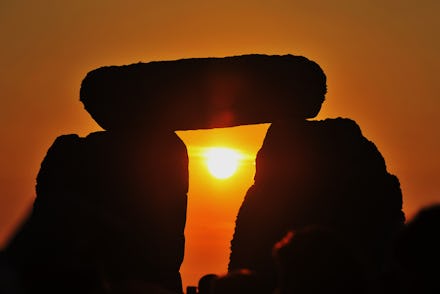Scientists Have Made a Mindblowing Discovery at Stonehenge

Stonehenge is bigger — much, much bigger — than we originally thought.
Archaeologists working on the University of Birmingham's Stonehenge Hidden Landscapes Project made the discovery after mapping the area using sophisticated surveying tools, including remote sensing techniques.
These devices allowed them to see the grounds underneath and around Stonehenge, and what they found is nothing short of amazing: a veritable landscape of structures, including 17 previously undiscovered ritual monuments and a collection of burial mounds, one of which is older than Stonehenge itself. Researchers also discovered that Durrington Walls, a Neolithic settlement 2 miles east of Stonehenge, had an earlier form that was surrounded by a row of enormous stones or posts.
In other words, Stonehenge was far from a standalone structure — it was joined by a giant network of chapels, ritual monuments, burials and pits.
As the project leader Vincent Gaffney put it, "Stonehenge may never be the same again."
The discovery really is monumental. As well as the new monuments themselves, the team also discovered new kinds of monuments, and in the world of archaeology, that's big. "[It] has revealed that the area around Stonehenge is teeming with previously unseen archaeology," Gaffney said in a university release.
Even better, all of this newly discovered information is together in one place — a digital map. It will determine how Stonehenge is studied in the future and will make it easier for scientists working on the project.
But wait, there's more: Researchers are just getting started. Despite the fact that Stonehenge is one of the most-studied archaeological sites in the world, this latest discovery proves that there's much more to be found.
"[The] work has revealed a clutch of previously unsuspected sites and monuments showing how much of the story of this world-famous archaeological treasure house remains to be told," said Nick Snashall, National Trust archaeologist for the Avebury and Stonehenge World Heritage Site.
We could be in store for some human discovery, too. People created "their own shrines and temples," Gaffney told the Guardian. "We can see the whole landscape is being used in very complex ways."
Whatever else comes of the research, the team's findings thus far are enough to change our perceptions of the site. "This radically changes our view of Stonehenge," Gaffney said. Perhaps President Obama should prepare for another trip.